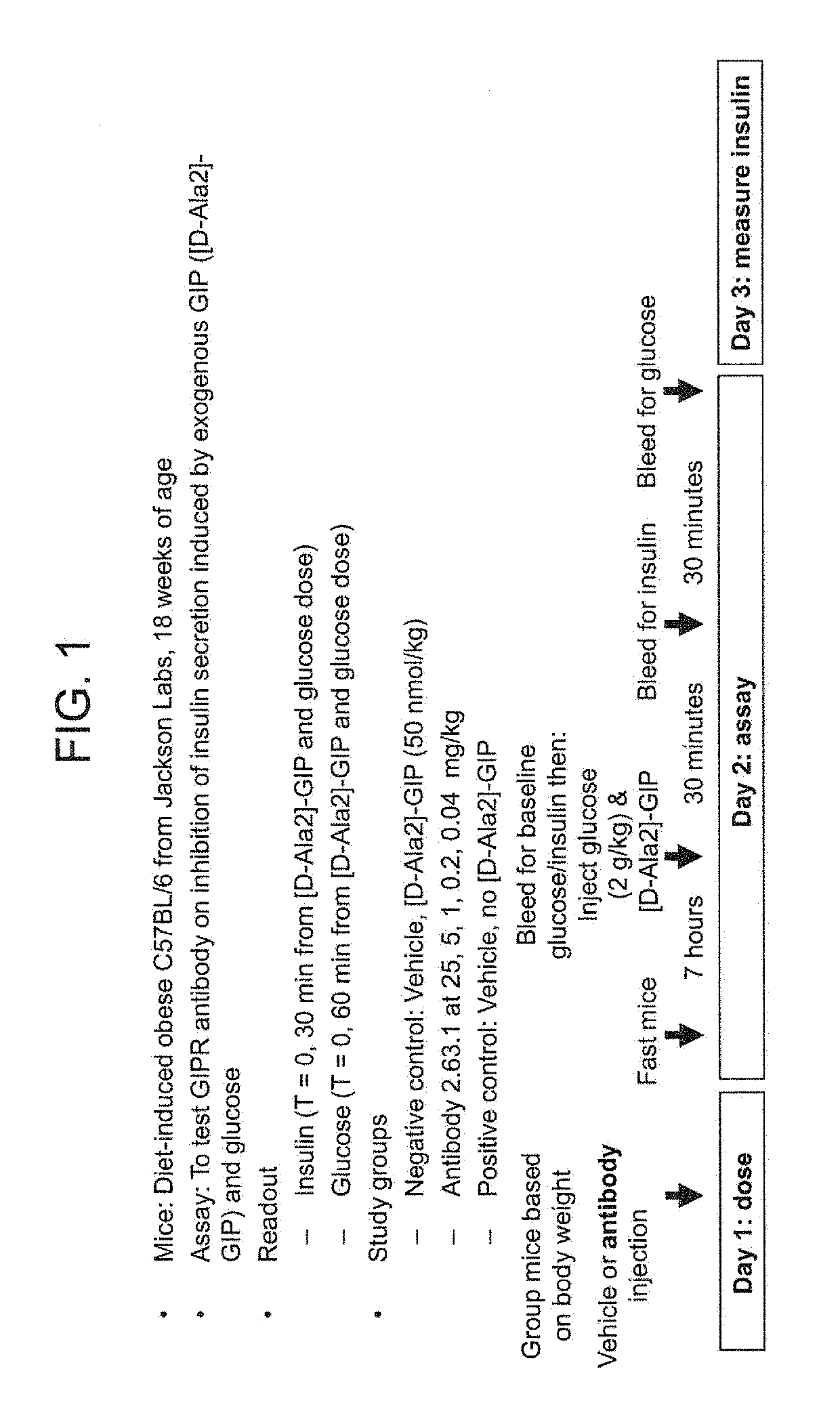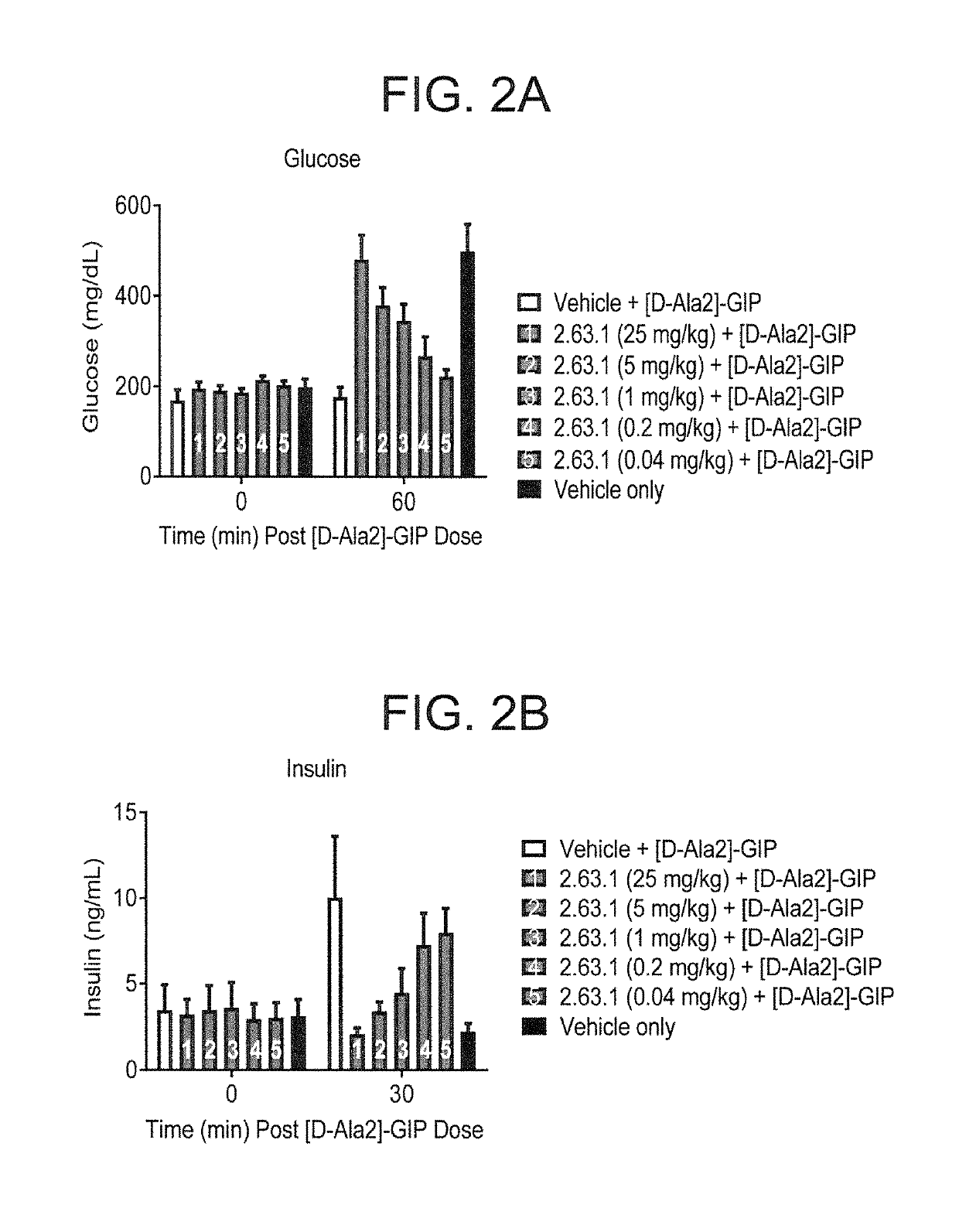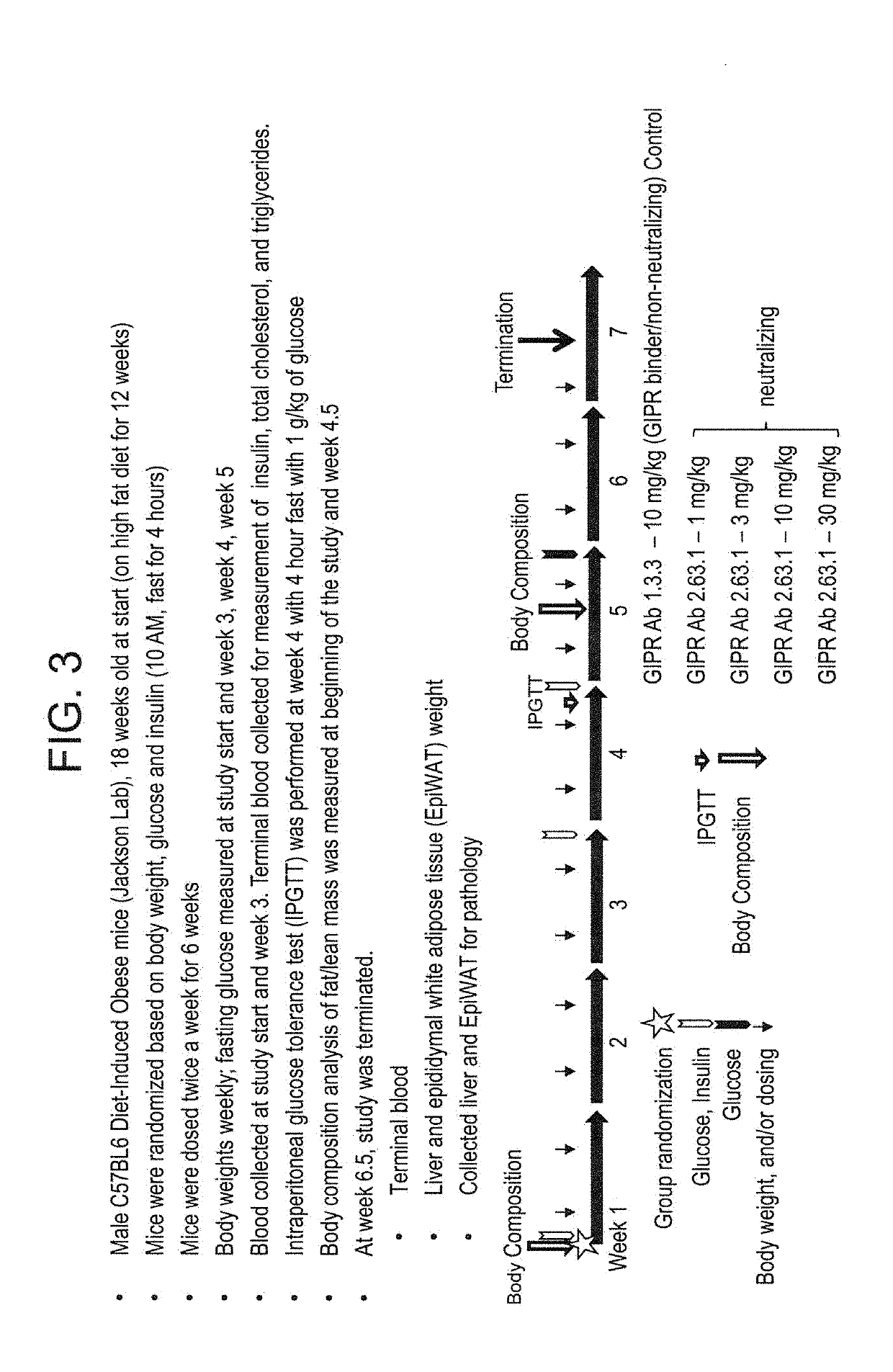Method of treating or ameliorating metabolic disorders using binding proteins for gastric inhibitory peptide receptor (GIPR) in combination with GLP-1 agonists
a technology of glp-1 and gipr, which is applied in the field of treatment or amelioration of metabolic disorders, can solve the problems of limited function of glp-1 and a half-life of approximately 2 minutes, and achieve the effects of increasing glucose tolerance, reducing plasma insulin, and reducing plasma glucos
- Summary
- Abstract
- Description
- Claims
- Application Information
AI Technical Summary
Benefits of technology
Problems solved by technology
Method used
Image
Examples
example 1
[0492]Generation of anti-murine GIPR antibody. Immunizations were done in 129X BL / 6 mice from Charles River by GeneGun with a pool of DNA (pTT5:E3K-muGIPR-E3K and pTT5:Mut1-mGIPR-Mut1) and CA-64. B-Cells were harvested from the mice with highest titers and fused with Sp2 / 0-Ag14 cells creating hybridomas. Antibodies were produced from hybridomas cultured in hyperflasks at 37 C. Antibody was purified from cultured media by affinity chromatography (protein A FF, high salt / pH method) followed by a buffer exchange (UF / DF). N-terminal sequencing of variable domains was done using hybridomas. RNA was isolated from hybridoma lysate and converted to cDNA by TOPO-TA cloning of RACE PCR products. The light chain and heavy chain sequences were confirmed by LC / MS. The original isotype of the hybridoma antibodies were murine IgG2a. The subtype was changed to aglycosylated muIgG1 (N297 to G mutation) to be effector functionless. The recombinant sequence was cloned by GeneArt seamless cloning into ...
example 2
[0493]FIG. 1 provides an overview of the pharmacodynamics assay to test anti-murine GIPR antibodies. Seven week old male high fat diet (HFD)-induced obese C57BL / 6 mice were purchased from Jackson Labs. After arrival, mice were continued on high fat diet with Research Diets D12492 (60 kcal % fat) (Research diet) for one to two weeks. Mice were randomized by body weight and were administrated intraperitoneally with testing GIPR antibody or vehicle (10 mM acetate, 150 mM NaCl, pH 5.0) the day before intraperitoneal glucose tolerance test (IPGTT). Mice were fasted for 7 hours and IPGTT was performed immediately following exogenous GIP [D-Ala2]-GIP (50 nmol / kg, Phoenix Pharmaceuticals) given intraperitoneally. Blood samples were taken from tail nick at the times indicated. Glucose was measured using AlphaTrak blood glucose meter (Abbott). Blood insulin level was determined by using Insulin (mouse) ultra-sensitive EIA kit (ALPCO Diagnostics). Results are shown in FIG. 2 and show that the ...
example 3
[0498]FIG. 3 provides an overview of the study used to determine the effects of chronic treatment of diet induced obese (DIO) mice with the 2.63.1 antibody. 18 week old male C57BL / 6 DIO mice fed Research Diets D12492 (60 kcal % fat) were randomized into groups. Treatments were given twice a week intraperitoneally for 6 weeks. Blood glucose levels were measured from tail nick using a glucose meter (Abbott) after mice were fasted for 4 hours. Insulin levels were determined using mouse high range insulin ELISA (ALPCO Diagnostics). Triglyceride levels were measured using an Infinity triglyceride assay kit (Thermo Scientific). Total cholesterol was measured using an Infinity total cholesterol kit (Thermo Scientific). Body composition was determined using the minispec whole body composition analyzer (Bruker).
[0499]For intraperitoneal glucose tolerance test (IPGTT), mice were fasted for 4 hours. Glucose levels were measured and blood samples were taken from the tail vein before IPGTT was i...
PUM
 Login to View More
Login to View More Abstract
Description
Claims
Application Information
 Login to View More
Login to View More - R&D
- Intellectual Property
- Life Sciences
- Materials
- Tech Scout
- Unparalleled Data Quality
- Higher Quality Content
- 60% Fewer Hallucinations
Browse by: Latest US Patents, China's latest patents, Technical Efficacy Thesaurus, Application Domain, Technology Topic, Popular Technical Reports.
© 2025 PatSnap. All rights reserved.Legal|Privacy policy|Modern Slavery Act Transparency Statement|Sitemap|About US| Contact US: help@patsnap.com



